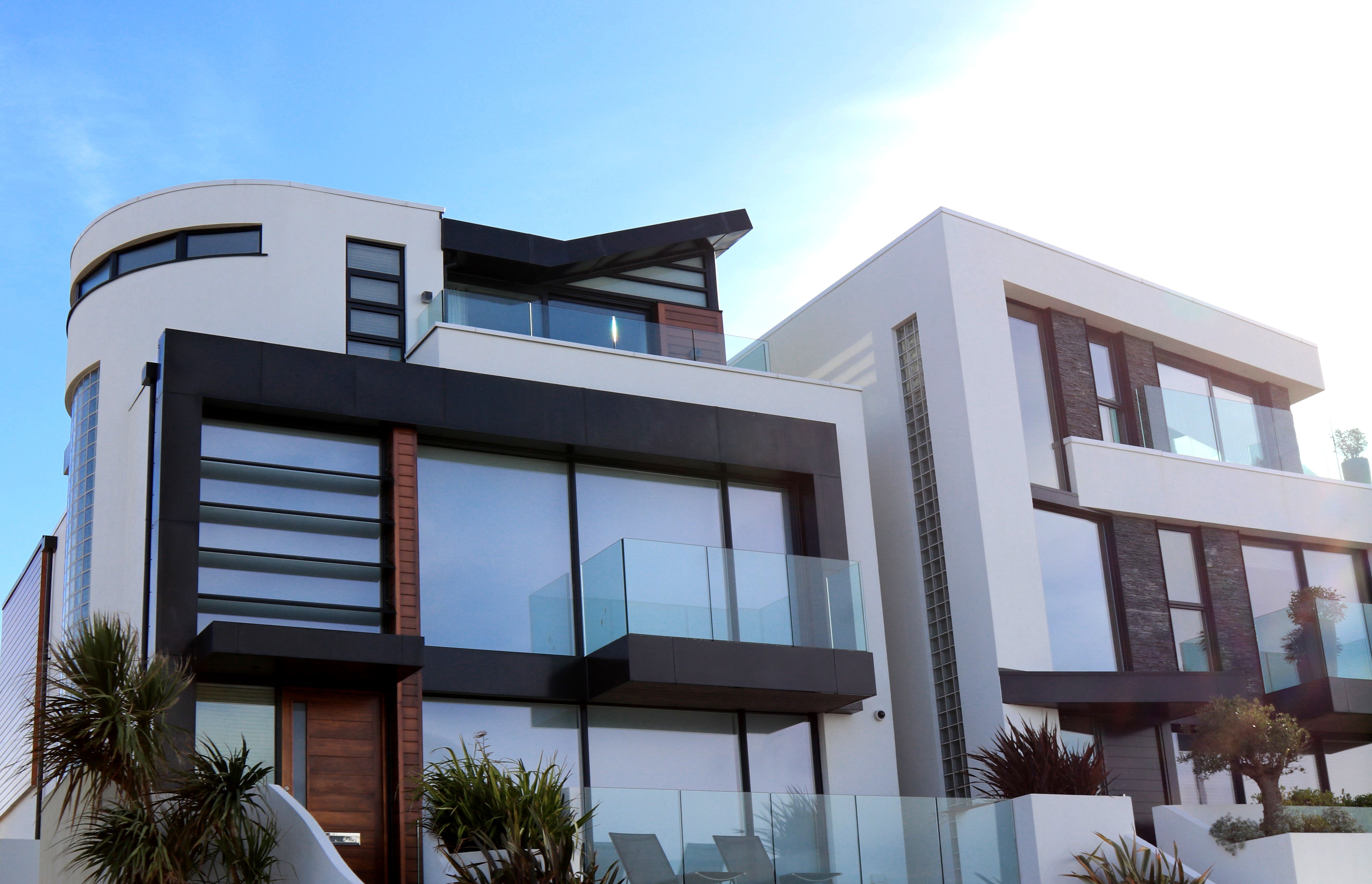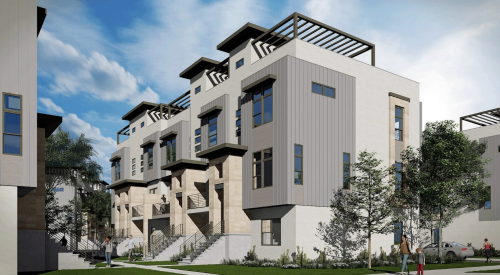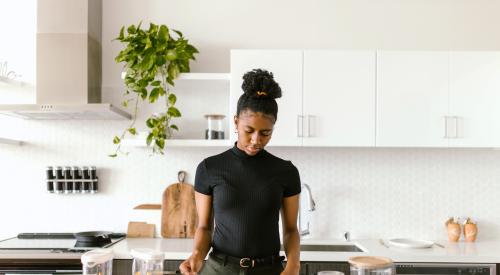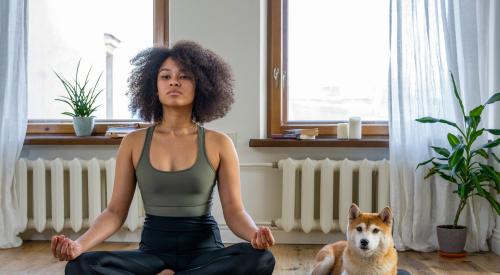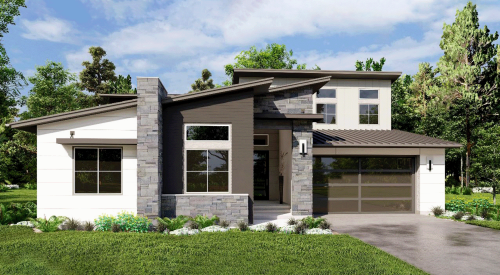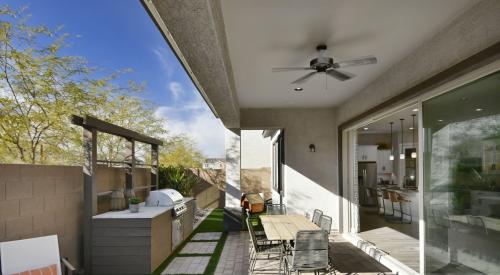During Utopia’s latest webinar, Exterior Design Trends and Innovations (available to watch here on-demand), experts came together to discuss the latest trends and innovations in exterior design, outdoor living, and indoor-outdoor connections in the single-family production homebuilding market.
Allie Martin, manager of design trends at the New Home Trends Institute (NHTI), highlighted three key findings for exterior material usage. Taken from a NHTI survey of over 1,000 homeowners, here are a few tips and findings that builders, designers, and architects should consider.
KEY FINDING 1: REEVALUATE YOUR EXTERIOR SPENDING
Material Priorities
What are the most desirable materials of late? According to NHTI: Stone, brick, siding, and stucco. Homeowners value stone and brick twice as much as siding or stucco, however, and NHTI recommends spending more on the former.
When it comes to material properties, homeowners are primarily concerned with durability and low maintenance. Secondarily, exterior materials that are stylish, sustainable, and inexpensive are considered important.
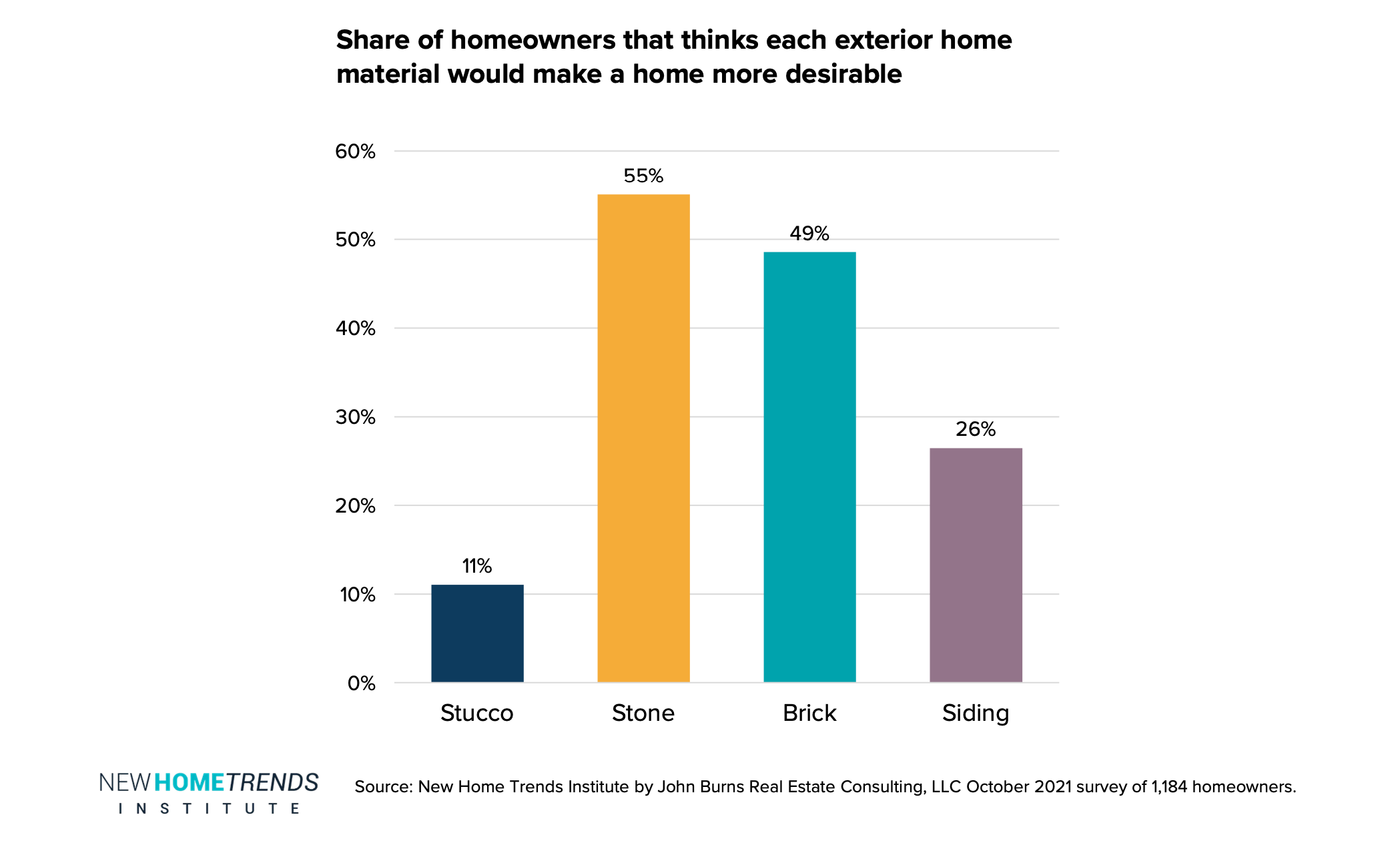
Something that builders could consider is synthetic materials (composite stone panels, wood-mimicking aluminum siding, etc.). With greater durability and less maintenance than its natural counterparts, builders can spend less while maintaining the same look.
RELATED: From Fashion to Facade: How Homes are Getting Bolder and Edgier
KEY FINDING 2: REGIONAL DIFFERENCES MATTER LESS TODAY
Elevation Styles
Exterior style expectations for the next three years are stable.
According to NHTI’s research, the top elevation styles are consistent with last year, and will likely remain popular for the next three years. Sixty-three percent of architectural designers believe Contemporary will be popular over the next three years, while 55% said the same for Farmhouse, 38% for Craftsman, and 31% for Mid-Century.
Designers are also experimenting with a mix of styles, and NHTI finds that homeowners have an appetite for “soft transitional” exteriors—a mix of traditional and modern. These transitional homes are gaining popularity in markets that have been historically traditional in the past.
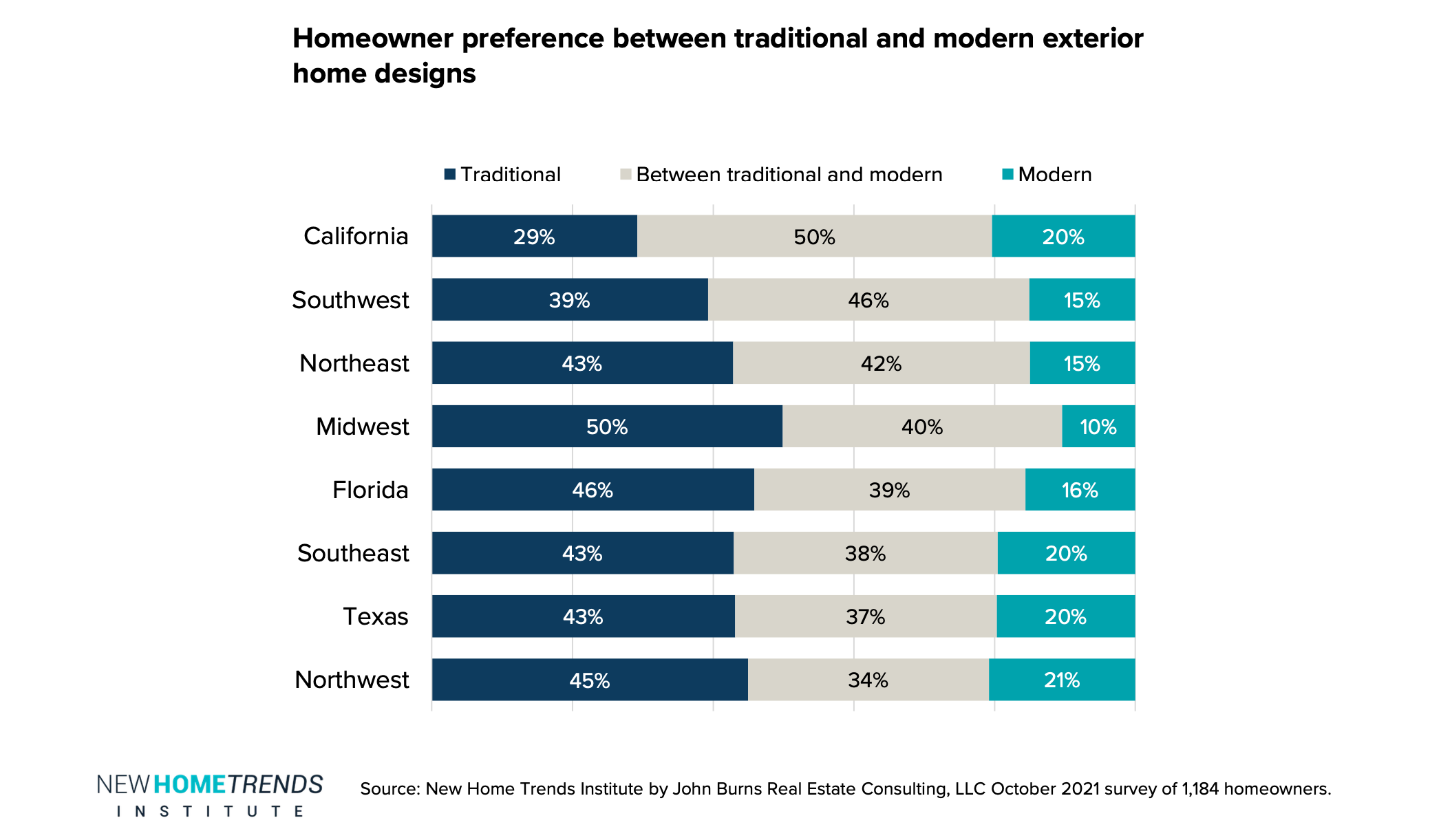
The Farmhouse, for example, is one style that many have predicted the death of. However, a modern version that includes new color expressions and regionalized details shows that the style may have some increased longevity.
Areas that may benefit the most from this? California and the Southwest indicate the highest number of people who like the “soft transitional” mix. All over the country, 34 to 50% of homeowners prefer a combination of traditional and modern styles.
In the end, the report finds that differences in exterior styles based on region don’t matter as much as they used to. Relocating homebuyers are bringing their exterior preferences with them, and trends are spreading more quickly across the country than ever before.
KEY FINDING 3: ENHANCE EXTERIORS THROUGH MATERIAL MIXING
Material Mixing
Prioritizing the right materials also means choosing the right mix.
NHTI finds that 68% of homeowners believe exterior material mixing improves a home’s design. Forty-three percent believe the improvement is dramatic. Alternatively, just 16% found that mixing materials detracts from the home’s design, and another 16% were neutral.
It’s not just homeowners who believe this—architects are noticing the trend too.
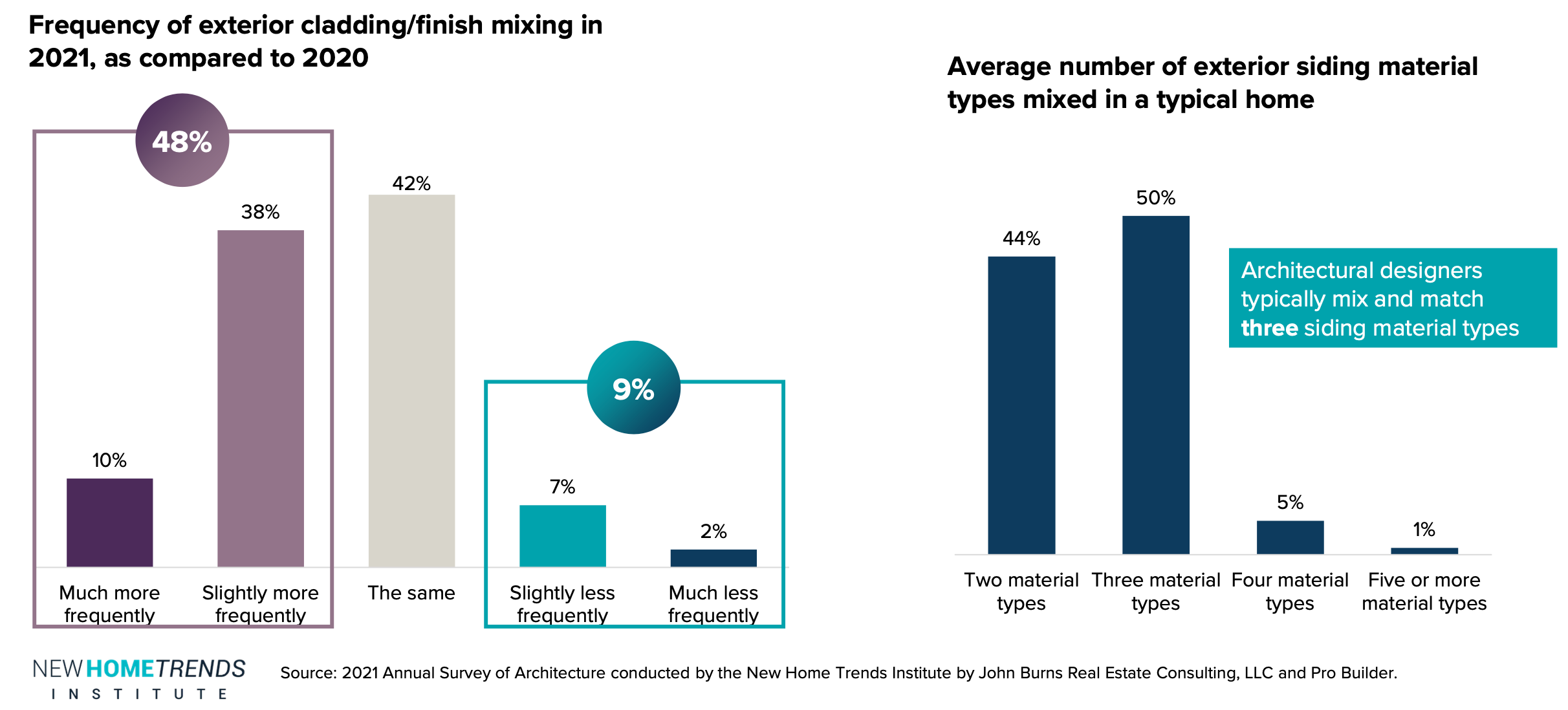
Forty-eight percent of architects used exterior cladding/finish mixing more frequently in 2021 compared to 2020, while 9% used it less. While mixing styles can be unique and eye-catching, how much is too much?
The report finds that the average number of exterior siding mixes in a typical home is between two to three material types. Forty-four percent of homes used two materials, while half (50%) used three types.
Now, that doesn’t mean to evenly splash a home in any two-to-three colors. Strategic mixing such as a restrained application or strategic placement of the materials, is key. Placing those stone panels at a visible, touchable level can increase appreciation and perceived value of the home’s exterior.
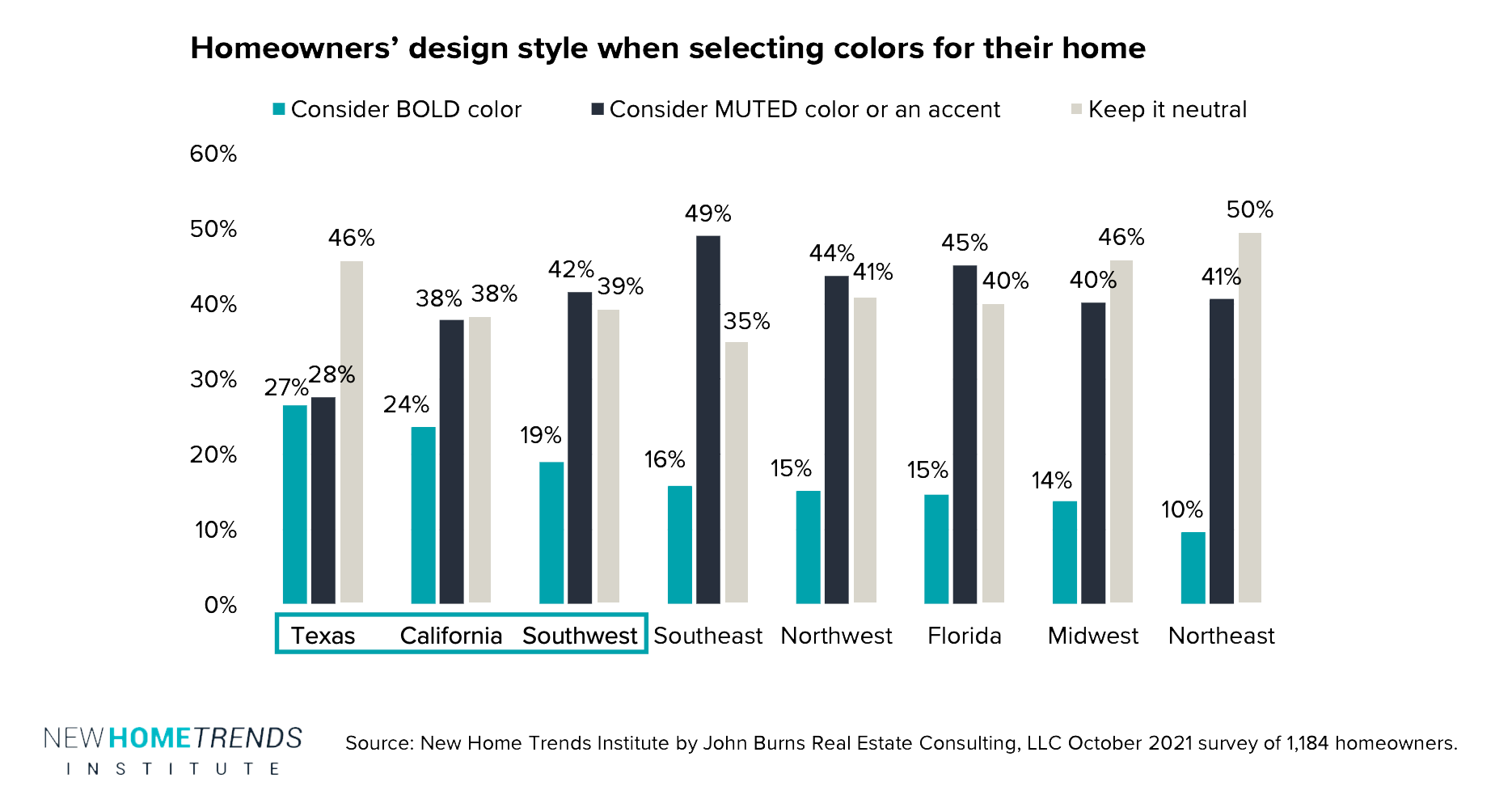
What about bold colors? NHTI finds that most markets prefer a neutral palette, but those same regions that enjoy “soft transitional” mixes—California, Texas, and the Southwest—are more open to a bold option. The Texas market largely comes from young Millennial homebuyers who aren’t afraid to push the boundaries.
The biggest takeaway here is that exterior material mixing is set to accelerate in multiple elevation types. When 68% of homeowners believe material mixing improves a home’s design, the thought should not be lost on builders and architects.
Those with further questions can email Allie here: amartin@realestateconsulting.com
Click here to access the on-demand webinar: Exterior Design Trends and Innovations. Other guest speakers include Cassie Cataline, marketing director for land and housing development at Nexton; Jeff Mulcrone, associate director of design at BSB Design; and Steve Booz, vice president of marketing and product management at Westlake Royal Building Products.


